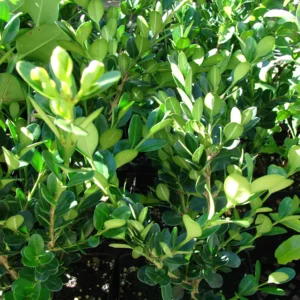Local Botanist
- Design your garden
- Shop plants
Discover full range
Discover plants by garden style
- Advanced Trees
- Garden styles
- Garden inspiration
- Garden advice
- 1300 737 600
- Discover your garden style
Japandi garden
Japandi garden
Japandi Garden Style
Japandi gardens combine the functionality of Scandinavian design with the serenity and simplicity of Japanese design. In this article, we will explore the key principles of Japandi gardens to help you navigate your way through a garden of ideas. The goal is to create an outdoor space that’s both stylish and tranquil.
From understanding the core principles of Japandi design to selecting the right plants, furniture, and decor, we will provide you with all the inspiration and tips you need to create your own Japandi garden oasis.

Key Takeaways
Japandi gardens manifest the simple and warm ambiance of the Scandinavian design and the classy, functional look of the Japanese aesthetic. The goal of this garden style is to create a space that’s stylish, serene, and functional.
There are important things to consider when bringing to life a Japandi garden style, such as minimalism featuring smooth, modern lines, functionality, and tranquillity.
Japandi gardens work even in an urban setting because of their minimalistic approach to designing. Combining simplicity and functionality, this garden style enables a limited urban space to be transformed into a peaceful sanctuary in the city. Since the Japandi design encourages decluttering, it promotes stress reduction and better mental wellness.
Japandi gardens are characterised by their use of clean lines, carefully curated elements, minimalist plantings, Zen garden features, and the overall vibe of harmony.
Japandi gardens incorporate minimalist plantings to bring out their simple yet elegant beauty. Evergreen trees such as black pines, small plants like bonsai, and cherry blossoms for a dash of colour are major additions to complete your garden’s Japandi look.
Understanding the Japandi aesthetic in garden design
The Japandi aesthetic in garden design is a harmonious fusion of Japanese and Scandinavian influences. This section will explore the definition of Japandi design, highlighting its key principles of minimalism, functionality, and serenity.
We will also discuss why Japandi gardens are particularly well-suited for urban retreats, offering a peaceful sanctuary in the midst of a bustling city.
Key principles of Japandi gardens:
Minimalism is everything: A central principle of Japandi gardens, it involves a thoughtfully curated selection of elements, eliminating clutter, and focusing on clean lines and uncluttered spaces.
Functionality is key: Another equally important feature is functionality, as Japandi gardens aim to maximise the use of outdoor areas while maintaining a sense of simplicity.
A strong sense of serenity: Lastly, serenity is achieved through the incorporation of natural materials, soothing colours, and a careful balance of elements to create a peaceful and harmonious environment.

Why Japandi gardens are perfect for urban retreats
Japandi design is the perfect marriage between Japanese and Scandinavian aesthetics.
It combines the clean lines, simplicity, and functionality of Scandinavian design with the serenity, balance, and natural elements of Japanese design.
Urban environments can be fast-paced and busy, often lacking natural elements and peace. Incorporating Japandi design elements can change that, offering a solution that provides a serene retreat in the heart of the city. With their minimalist design and focus on functionality, Japandi gardens make the most of limited urban spaces, transforming them into tranquil havens.
Benefits of Japandi garden style:
- Creates a peaceful sanctuary in the midst of a bustling city
- Maximises the use of limited urban outdoor spaces
- Provides a serene and calming environment
- Brings natural elements into urban areas
- Promotes relaxation and stress relief
Essential elements of a Japandi garden
To create an authentic Japandi garden, certain elements are essential. Let’s explore the key components of a Japandi garden:

Natural materials
Japandi gardens emphasise the use of natural materials such as wood, stone, and bamboo. These materials create a connection with nature and add organic beauty to the garden.

Clean lines
Minimalism is a fundamental principle of Japandi design. Clean, straight lines are prominent in the architecture, furniture, and pathways of a Japandi garden, creating a sense of simplicity and order.

Carefully curated elements
Every element in a Japandi garden is thoughtfully chosen and placed. Whether it’s the selection of plants, the arrangement of stones, or the positioning of decor, each component contributes to the overall harmony and balance of the space.

Balance of yin and yang
Japandi gardens strive to achieve a harmonious balance between yin and yang energies. This balance is reflected in the use of contrasting elements such as light and dark colours, soft and hard textures, and open and enclosed spaces.

Minimalist plant selection
In a Japandi garden, the plant selection is carefully curated to maintain a minimalist aesthetic. The focus is on using a limited number of plants that can thrive in harmony with one another and require minimal maintenance.

Zen garden features
Incorporating Zen garden features such as meditation stones, sand or gravel raked into patterns, and water features add to the tranquillity and serenity of a Japandi garden.

Transform Your Garden
Dreams into Reality!
Japandi garden plants: Selecting plant species for harmony
The selection of plants is a crucial aspect of creating a harmonious Japandi garden. Carefully chosen plants can enhance the serenity and aesthetic appeal of your outdoor space.
In this section, we will explore specific plant species that are commonly used in Japandi landscapes, including trees, small plants, flowering plants, and evergreens.
Small plants with big impact
Bonsai: Meticulously pruned and crafted into miniature trees, evokes a sense of nature’s grandeur in a small form. Their sculptural appearance and serene presence make them ideal for adding a focal point or accent to a small Japandi garden.
Kokedama: A Japanese variant of bonsai, involves growing plants in moss-covered balls. These “string gardens” have become increasingly popular in the selection of japandi garden plants due to their unique and artistic appeal.
Trees that define Japandi landscapes
Cherry blossoms: Symbolises the beauty and transience of life and are often associated with Japanese aesthetics. Their delicate pink flowers create a stunning visual display in the garden, especially during the spring season.
Black pines: Represent strength and resilience. These evergreen trees, with their distinctive dark green foliage, add a touch of elegance and structure to a Japandi landscape.
Using evergreens for year-round tranquillity
Evergreens, such as junipers, boxwoods, and yew, retain their lush green foliage even during the winter months. Their year-round presence adds a sense of stability.
You can also use our garden style plant calculator to figure out which plants suit your garden based on its area size and layout.
Plants you’ll find in a Japandi garden

Design your dream garden today!
Get in touch with our expert garden designers for a quote.
Find out more






